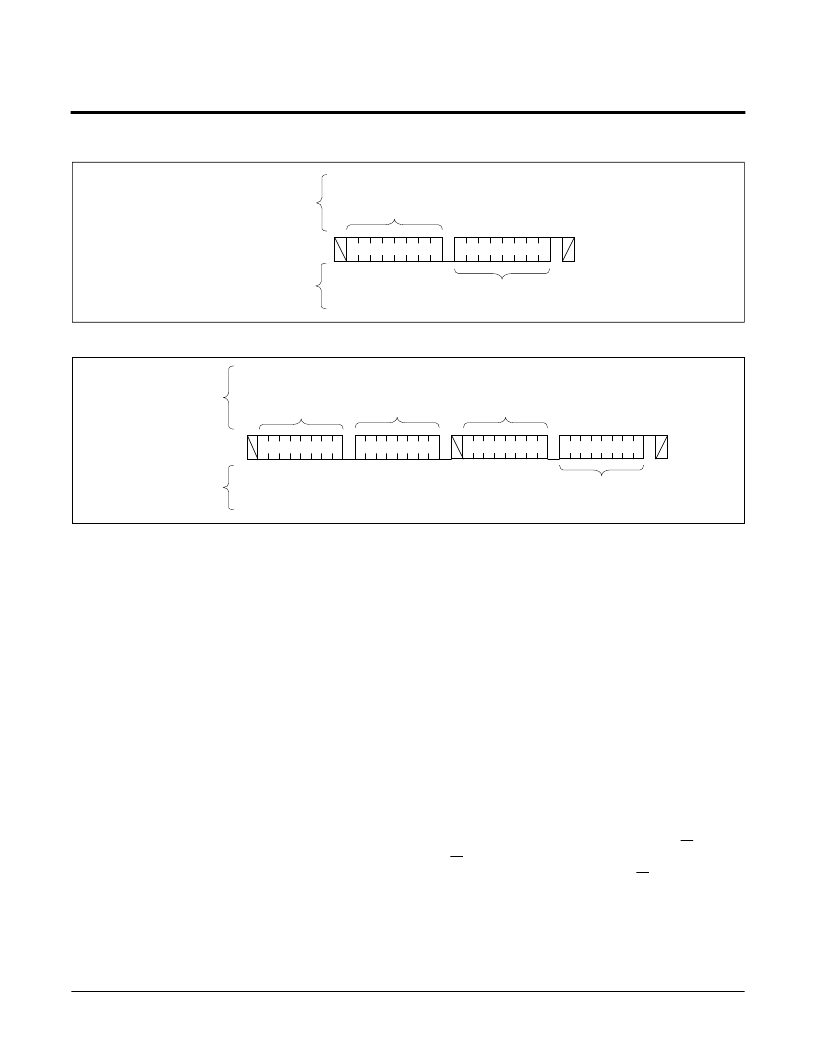- 您現(xiàn)在的位置:買賣IC網(wǎng) > PDF目錄371259 > X4C105V20I-VTRIP 20MHZ, MLF, TQFP, IND TEMP, GREEN, 5V(MCU AVR) PDF資料下載
參數(shù)資料
| 型號: | X4C105V20I-VTRIP |
| 英文描述: | 20MHZ, MLF, TQFP, IND TEMP, GREEN, 5V(MCU AVR) |
| 中文描述: | EEPROM的 |
| 文件頁數(shù): | 8/19頁 |
| 文件大小: | 258K |
| 代理商: | X4C105V20I-VTRIP |

X4C105
Characteristics subject to change without notice.
8 of 19
REV 1.0.1 6/14/01
www.xicor.com
Figure 9. Current Address Read Sequence
Figure 10. Random Address Read Sequence
S
t
a
r
t
S
t
o
p
Slave
Address
Data
A
C
K
SDA Bus
Signals from
the Slave
Signals from
the Master
1
0
Slave
Address
Byte
Address
A
C
K
A
C
K
S
t
a
r
t
S
t
o
p
Slave
Address
Data
A
C
K
1
S
t
a
r
t
SDA Bus
Signals from
the Slave
Signals from
the Master
The device offers a similar operation, called “Set Cur-
rent Address,” where the device ends the transmission
and issues a stop instead of the second start, shown
in Figure 10. The device goes into standby mode after
the stop and all bus activity will be ignored until a start
is detected. This operation loads the new address into
the address counter. The next current address read
operation will then read from the newly loaded
address. This operation could be useful if the master
knows the next address it needs to read, but is not
ready for the data.
Sequential Read
Sequential reads can be initiated as either a current
address read or random address read. The first data
byte is transmitted as with the other modes; however,
the master now responds with an acknowledge, indicat-
ing it requires additional data. The device continues to
output data for each acknowledge received. The master
terminates the read operation by not responding with an
acknowledge and then issuing a stop condition.
The data output is sequential, with the data from
address n followed by the data from address n + 1.
The address counter for read operations increments
through all page and column addresses, allowing the
entire memory contents to be serially read during one
operation. At the end of the address space the counter
“rolls over” to address 0000
to output data for each acknowledge received. Refer to
Figure 11 for the acknowledge and data transfer
sequence.
H
and the device continues
SERIAL DEVICE ADDRESSING
Slave Address Byte
Following a start condition, the master must output a
slave address byte. This byte consists of several parts:
– a device type identifier that is always ‘1010’.
– two bits that provide the device select bits.
– one bit that becomes the MSB of the address.
– one bit of the slave command byte is a R/W bit. The
R/W bit of the slave address byte defines the opera-
tion to be performed. When the R/W bit is a one,
then a read operation is selected. A zero selects a
write operation. Refer to Figure 12.
相關(guān)PDF資料 |
PDF描述 |
|---|---|
| X4C105V20-VTRIP | EEPROM |
| X5001 | Floor Cleaner/Neutralizer; Trade Name, Chemical:Doodleduster RoHS Compliant: NA |
| X5001P | Floor Cleaner/Neutralizer; Dispensing Method:Spray; Trade Name, Chemical:TroubleShooter; Volume:1quart (US) |
| X5001P-4.5A | Multi-Purpose Cleaner; Dispensing Method:Bottle; Trade Name, Chemical:Neutral Quat; Volume:2L RoHS Compliant: NA |
| X5001S8 | Multi-Purpose Cleaner; Dispensing Method:Bottle; Trade Name, Chemical:All Purpose; Volume:1gallon (US) RoHS Compliant: NA |
相關(guān)代理商/技術(shù)參數(shù) |
參數(shù)描述 |
|---|---|
| X4C105V20-VTRIP | 制造商:未知廠家 制造商全稱:未知廠家 功能描述:EEPROM |
| X4C303N1CC | 制造商:SAIA - BURGESS ELECTRONICS INC. 功能描述:Catalogue / X4C303N1CC |
| X4C303N1CCS11 | 制造商:JOHNSON ELECTRIC 功能描述:SWITCH, 3A,125/250VAC, SOLDER 制造商:SAIA - BURGESS ELECTRONICS INC. 功能描述:Catalogue / X4C303N1CCS11 |
| X4C303N8DM | 制造商:SAIA - BURGESS ELECTRONICS INC. 功能描述:Catalogue / X4C303N8DM |
| X4C305N1CC | 制造商:SAIA - BURGESS ELECTRONICS INC. 功能描述:Catalogue / X4C305N1CC |
發(fā)布緊急采購,3分鐘左右您將得到回復(fù)。